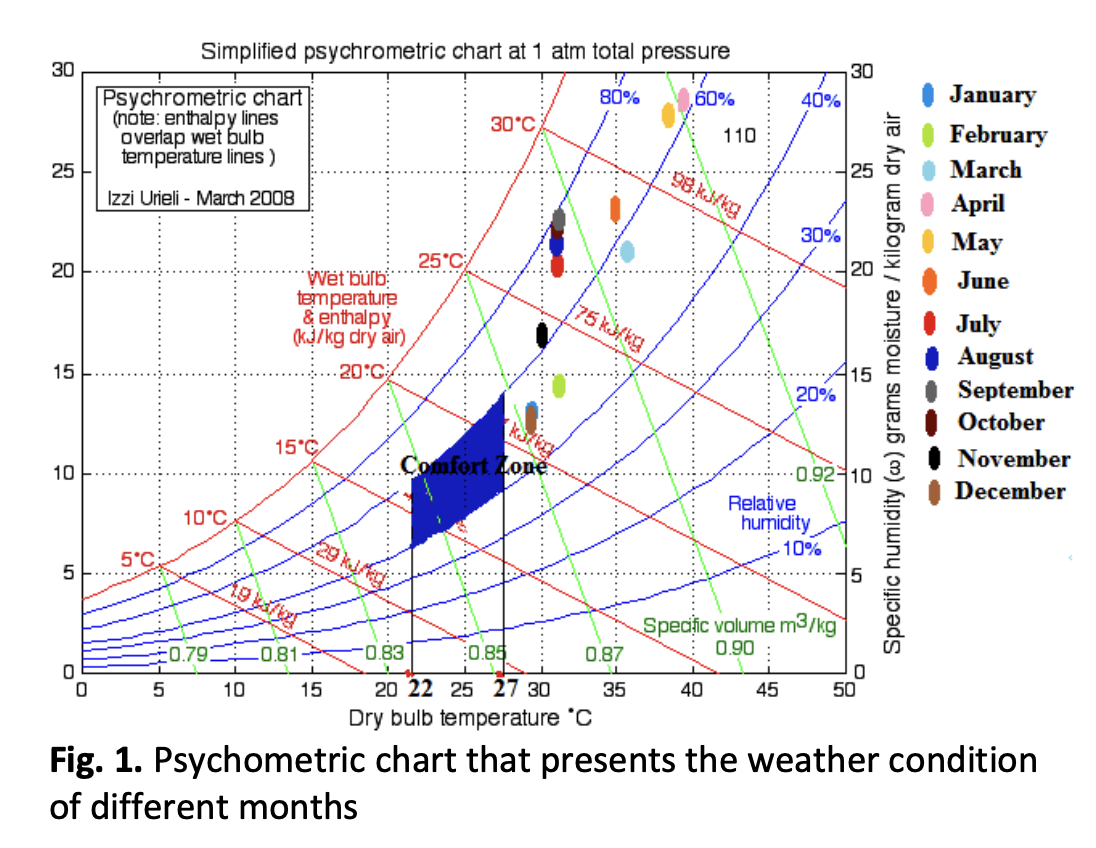Buoyancy-Driven Ventilation in the Interior-Most Flats of an Apartment Building with Different Corridor Vent Opening Condition
DOI:
https://doi.org/10.37934/araset.36.2.3655Keywords:
Buoyancy-driven ventilation, Apartment, Corridor vent, CFDAbstract
In the present work, computational simulations are conducted for an apartment building to investigate the bouncy-driven airflow in the corridor and inside the rooms. Two types of corridor vent openings are provided through which the hot light air moves to the ambient. Two floors are considered for the study. The simulations are conducted with three different temperature difference conditions between walls and room inside air such as; ∆T=10OC, ∆T=15OC, ∆T=20OC for two different corridor vent opening configurations. When the corridor vent openings are kept only in front of the doors and windows, recirculation zones below the roof near the air entry region are observed and part of the air escaped through the inlet. In the case of a wide corridor vent opening, air does not escape through the inlet. With increase in ΔT, the airflow increases irrespective of vent positions. Mainly the area of the rooms is well ventilated closer to the door position. It is also observed that the lower floor is relatively well-ventilated as compared to the upper floor. The ACH increases with increase in vent opening and it also increases with increase in ∆T.
Downloads





























